The best way to produce more food in your garden is to give each plant the space it needs to thrive. Growing a garden is an excellent method to grow healthy vegetables, herbs, and fruits to enjoy your favorite fresh foods at home. While spacious outdoor gardens produce large crops, you don’t need a large garden to grow food in a small space. With the right seed, containers, soil, watering schedule, and sunlight, you can grow your favorite delicious vegetables in small steps.
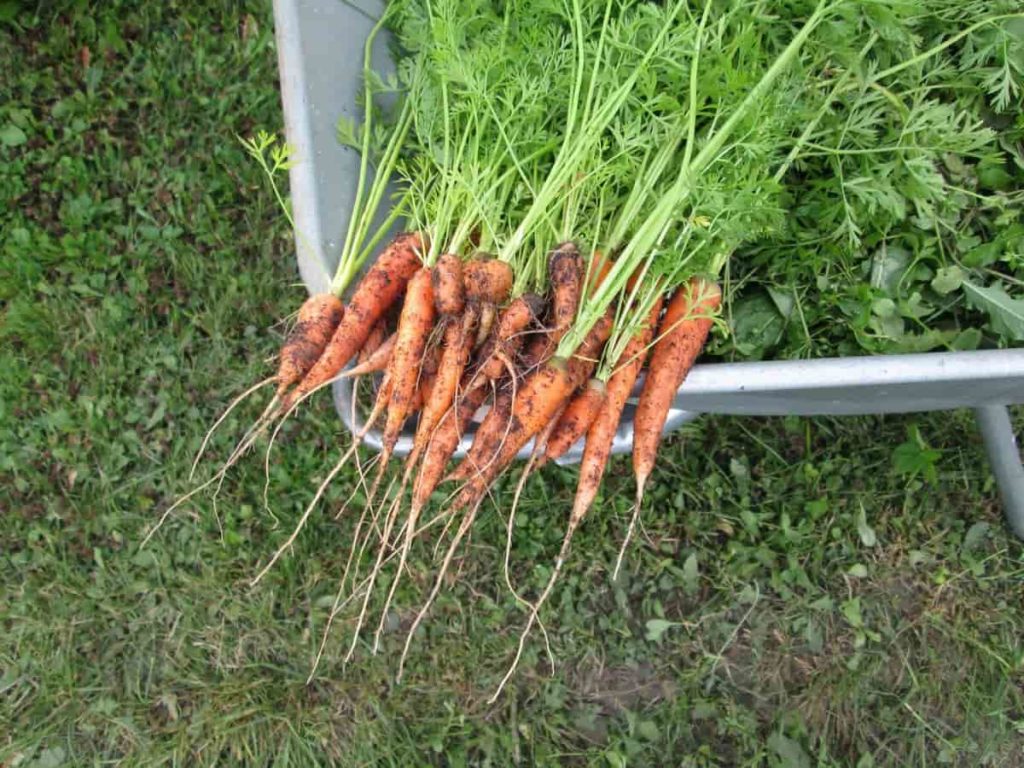
You don’t need a backyard to grow food in the garden, so you must be creative with your space. Even if you only have a window, you can grow some food. One of the biggest problems that every homeowner faces sooner or later is the problem of wanting to produce more food than their garden space. Let’s check out how to grow food at home in small spaces below.
Ideas to grow food at home
- Grow more productive plants
- Plant a raised bed garden
- Using garden plants that do double duty (for example, flowers and fruit or decorative and tasty)
- Use square foot gardening techniques
- Plant in succession for longer harvests
- Increase soil fertility for better harvest
- Plant the foods you like the most
- Pick up foods that cost more at the store or are heavily sprayed
- Plant heat-loving vegetables between pavers
- Interplant herbs, vegetables, flowers, and fruits to make the most of the available space
- Plant in containers, window boxes, hanging baskets, and wall planters
- Grow vertically on fences or a trellis
- Grow sprouts and microgreens indoors
- Pick potted herbs on a sunny windowsill
- Pick food on a sunny terrace
Ways to utilize a small space at home
You don’t need a large area to grow food at home. Small sun spots in your yard, patio, or balcony can all be successful. Heirloom seeds and the new hybrid varieties offer excellent options such as colorful new vegetables and compact plants. Select the right location, and ideal varieties of plants will help you maximize your harvest.
Along with providing proper growing conditions, it is also helpful to consider the use of fencing. You may be surprised how your greens attract other animals in your community. If you plant it, they will come – to use this method to protect your small vegetable garden for the best results.
How to grow food at home in small spaces
1. Plant in a window box
You can prepare a salad in a window box—Lettuce, Radish, Spinach, and Green Onions. Don’t forget about herbs, which can produce anywhere. A window box is also great for growing strawberries. Hang planters on your balcony railing. Firstly, make sure you choose a sturdy planter that is either self-watering or has a drainage tray.
You can grow leafy greens or create a small herb garden. Make the most of sunny spots. Sweet Peppers and Chili Peppers need plenty of sun and grow well in containers. Herbs also grow well in full sun, especially basil. Make your planters mobile. Before planting, consider whether you’ll need to move your large containers.
In case you missed it: Best Vegetables to Grow at Home in India: Easy for Pots, Terrace, Balcony, and Indoors
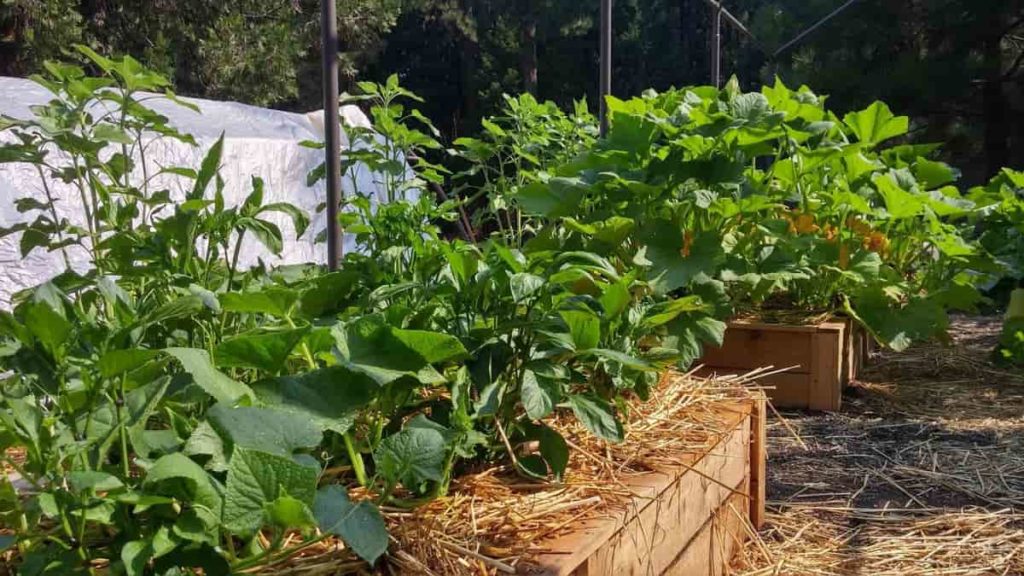
2. Try square foot gardening
Square-foot gardening is planting vegetables, herbs, and flowers by growing them in 4′ x 4′ beds and growing vegetables by individual square feet instead of in rows, with the smallest steps possible with minimal effort. Another great method to grow more food in less space is the square foot gardening method.
The premise behind square-foot gardening is that you divide your garden bed into square feet, and then you allocate each square foot a specific crop and a certain number of vegetables to grow in that space. Some vegetables require more space, so some require a full square foot per plant, while others need less space and can be grown more densely. For example, you can grow one tomato plant per square foot, another four of Lettuce, another nine of garlic, and another 16 carrots because they each need different space to grow well.
The main benefit is planting every square foot with various vegetables, herbs, or flowers. You’re treating each square like a little garden. Instead of using planting rows to keep things neat where each vegetable is, we use a grid system. Square foot gardening breaks it down so you can grow a lot in a small space.
3. Choose space-saving plant types
Dwarf fruit trees, vegetables, and microgreens are ideal choices. You can underplant potted fruit trees with shallow-rooted edible flowers or herbs to improve space. You may have to compromise on yield or vegetable size in some cases, but there are plenty of options. Mini Melons, Pumpkins, and Squash are just a few vegetables to try. They require less water than larger crops, so you also save money.
Fast-growing small space crops include microgreens and sprouts. Both can be grown indoors with enough light. Sunny window sills are perfect—stack microgreens on tiered trays or shelves to maximize space. Plant successions regularly for a continuous supply. Spring Onions, Chives, Leeks, and Garlic are all slender allium herbs that take up minimal space. ‘Pick and pluck’ loose-leaf Lettuce, and Spinach plant varieties are compact. It is because you harvest individual leaves as they grow rather than when they are fully mature.
When you choose the crops you’re going to grow; it can be tempting to try various varieties and “novelty” items. But when your primary goal is to grow more food in less space, you want to be much more practical and strategic in your decision-making. Know your gardening area and even your specific microclimate, and choose crops suitable for growing where you live. If you can find an organic seed company, this is an excellent location to find seeds and crops that are especially suited to your region.
In case you missed it: How to Grow Curry Leaves in the USA: From Seeds in Containers at Home, A Step-By-Step Guide for Beginners
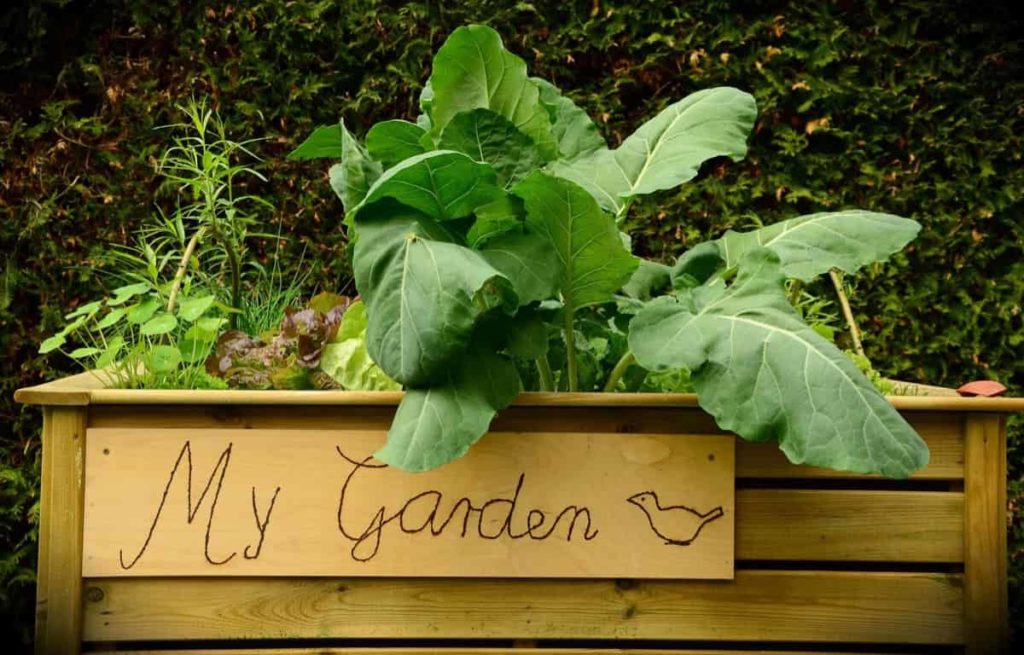
4. Grow vertically
If you can’t grow, consider growing. Vertical gardening is small space gardening. Use trellises to grow Cucumbers and Squash successfully; you can grow melons vertically. You can make a trellis almost anything, but bamboo is good because it’s flexible but still attractive. Vegetable plants like Cucumbers, Tomatoes, Sugar Snap Peas, and Green Beans grow well in containers, and Cucumbers can grow vertically to save you some valuable space.
Add a trellis to the pot or container, depending on what you’re growing. Make sure the pots are deep enough to accommodate the roots of the plants. For Tomatoes, put a cage around the container to support the weight of the plant as it grows. Vertical gardening always makes a list when discussing growing more food in less space. And rightly so, because you can pack a ton of food into a small footprint if you grow up instead of out.
But not every plant can be grown vertically, so it comes back to choosing the right crops, and then you have the right set of trellises and growing them vertically. Some good vertical crops like Pole Beans, Peas (English Peas and Sugar Snaps), Cucumbers, Winter Squash and Pumpkins, Melons, and Indeterminate Tomatoes. You’ll need some trellis for each crop, and some will need more support than others to start leaning over and growing vertically.
5. Consider plants that do well in shady areas
One of the advantages of growing in small spaces is that you can use plants that do well in shady areas. If you plant Cucumbers vertically, you can plant the Lettuce in a container during the summer. You can eat fresh Lettuce at a time when traditional gardeners can’t because it’s so hot and their garden is in full sun. You can even grow herbs in shady places. Parsley, Mint, and Oregano do well in the shade areas.
6. Succession planting
It is a useful technique for any vegetable garden, large or small, but it’s especially valuable when there is limited space. Succession planting means replanting fast-growing crops every two to three weeks during the growing season. It is especially useful for crops such as Beans, Zucchini, and Lettuce that tire themselves out during heavy production. By planting in succession, you’ll produce enough food to feed your family (and you’ll have it all summer instead of all at once).
7. Utilize your microclimates
You could have areas around your property that aren’t necessarily in full sun, but where you could add some containers or even a raised bed. Pockets of shade throughout the property where most annual, sun-loving crops don’t grow well, but we’ve learned to use those shady areas to our advantage and grow crops that thrive in cool, shady areas.
Vegetable crops like Lettuce, Kale, Arugula, Mustard Greens, Bok Choy, and Spinach grow well in the shade. Carrots, Potatoes, Peas, Beans, and Radishes do well in partial shade. And, if you’ve got nothing but shade, why not try growing mushrooms. On the other hand, you have a greenhouse on your property that acts as a man-made microclimate. You can use it to extend your growing season, harvest heat-loving plants like Tomatoes and Peppers, or even grow some vegetables year-round.
In case you missed it: How to Grow Grafted Vegetable Plants: Benefits, and Suitable Vegetables
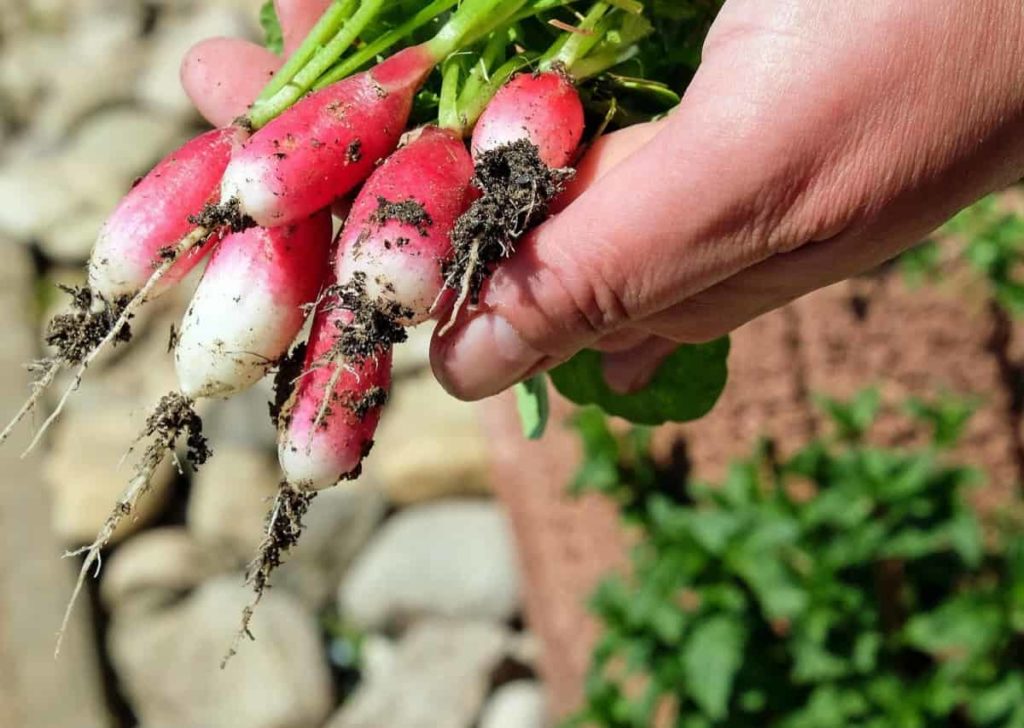
8. Interplanting
Interplanting is like companion planting, but instead of planting or growing two plants that grow simultaneously and benefit each other, you plant two or more crops of one slow-growing crop. In between is the process of planting a fast-growing crop from the same place. For example, you can grow radishes between your rows of carrots.
Radishes will grow much faster than Carrots, so you’ll get a crop of Radishes, and when you pull them out of the ground, your carrots will have room to fill in and grow. You can also grow Lettuce with onions. Lettuce will grow quickly, and you can then harvest it and allow Onions to fill in or transplant them to fill in the space.
9. Keyhole gardens
These maximize space by eliminating the need for walkways in traditional row gardening or raised beds. The design is intended to be drought resistant and provide nutrients through the compost throughout the growing season. A keyhole garden is a raised-style bed that takes the rough shape of a circle with a “keyhole” -a shaped path that provides access to the entire garden. Though in the center of the circle is a vertical tunnel containing many layers of manure.
As the compost breaks down, it mainly delivers nutrients directly to the bed. Certainly, an efficient method to grow keyhole gardens can be made from many different materials, as a quick search of the term will confirm. Suppose you have the space for a circle about 8 – 10 feet in diameter. In that case, you can use whatever suitable material is easily accessible, such as corrugated siding, cedar posts, landscape rock, brick, or any combination thereof.
10. Rethink buckets
You won’t believe what plants can grow in a 5-gallon bucket. They may not be the most attractive containers, but they are affordable and convenient, especially when moving plants as needed. Before you start, you need to make a drainage hole. Potatoes and Beets will do well in a bucket, as well as Carrots—make sure you consider the root system and depth of the bucket.
11. Container gardening
A vegetable and fruit container garden may be ideal if you have limited outdoor space, whether a small yard, shared yard, or balcony. One of the main things about container growing plants is the ability to grow almost any vegetable and fruit variety, given the right conditions and enough space for the right size container.
In case you missed it: How to Grow Papaya from Seeds at Home: In Containers, Indoors, Backyard, and On the Terrace
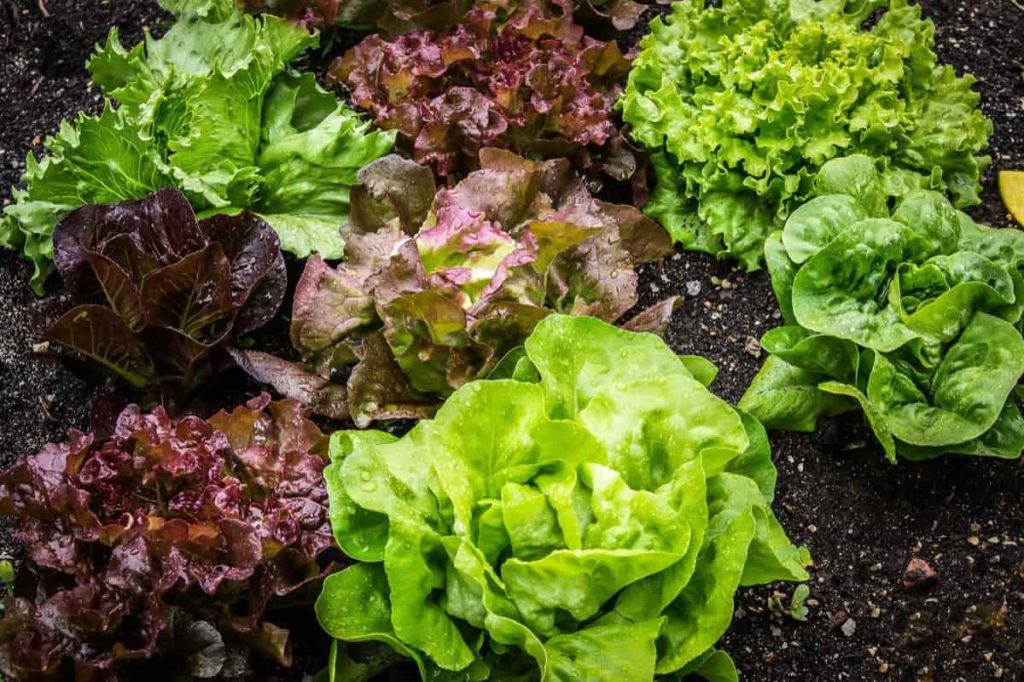
With the right watering system and sun exposure, it is possible to grow small fruit trees or shrubs successfully. Container gardens are also extremely space-efficient. Container gardens also have the added benefit of being a great back saver. They can be set up for those with limited mobility, ensuring that growing fresh fruit and vegetables at home is for everyone is accessible.
12. Companion planting
It is another great way to maximize growing space and fit more into your garden without compromising your plants’ health or space needs. It means planting certain crops next to each other so they can benefit from each other without inhibiting their ability to grow. Some companion plants will help add nutrients to the soil, which helps other nearby plants.
Another plant will repel pests or attract beneficial insects such as pollinators. Some will provide shade or protection from the wind, while some companion plants enhance the flavor of other crops, as in the case of planting Basil near Tomatoes.
Some good companion plants you can plant side by side:
Beans and Brassicas: Beans and Brassicas fix nitrogen in the soil and help make it bioavailable to other plants, making them a good companion plant for most plants. But they’re especially good companions for anything in the brassica family (Broccoli, Cauliflower, Cabbage, Brussels Sprouts, etc.) because brassicas are heavy nitrogen feeders.
Brassicas and Alliums: Brassicas (Broccoli, Kale, Cabbage, Cabbage, Brussels Sprouts) do well with crops in the allium family (Onions, Garlic, Shallots, Leeks, etc.) The theory is that alliums repel insects and improve their taste. Just try not to plant alliums directly next to the brassicas as they don’t go well together.
Tomatoes and Basil: Basil is said to repel pests that might otherwise attack Tomato plants, such as whiteflies, tomato hornworms, and aphids. It is said to improve the flavor of tomatoes growing on nearby plants.
In case you missed it: High Yield Tomato Varieties in India: A Farmer Guide for Good Profits
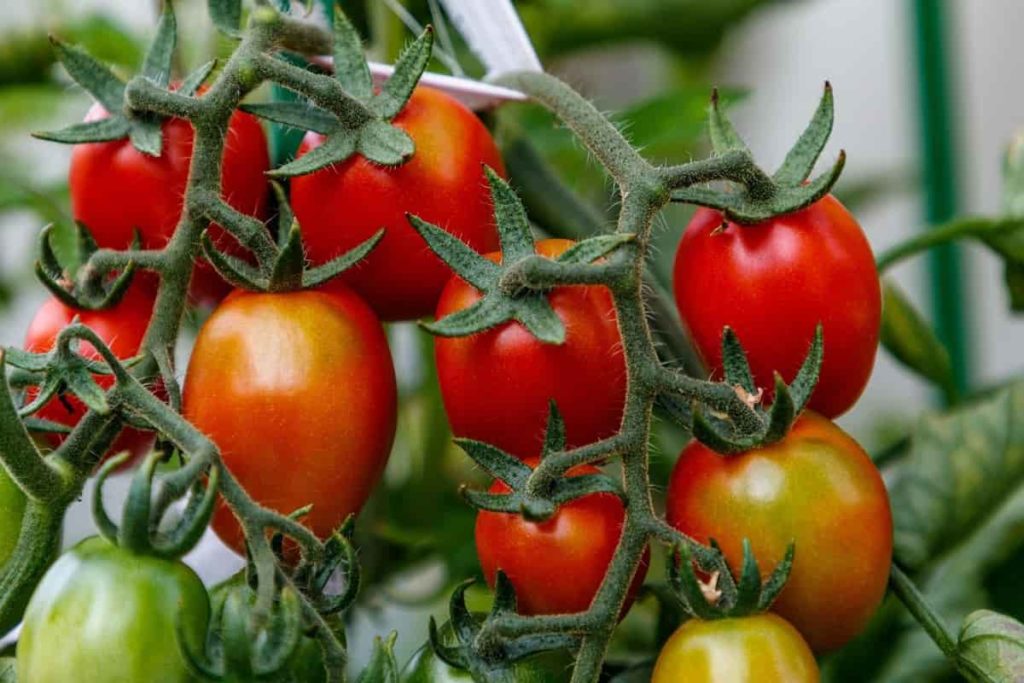
Squash, Corn, and Beans: The Corn grows upwards, giving the Pole Beans something to climb up. Pole beans fix nitrogen in the soil. And squash grows low, providing shade to keep the soil cool and moist, acting as a living mulch that prevents overgrowth of weeds, and a deterrent to critters like squirrels, rabbits, and raccoons.
- Types of Pesticides Used in Agriculture: A Beginner’s Guide
- Economical Aquaculture: A Guide to Low-Budget Fish Farming
- 15 Common Planting Errors That Can Doom Your Fruit Trees
- How to Make Houseplants Bushy: Effective Tips and Ideas
- Innovative Strategies for Boosting Coconut Pollination and Yield
- Pollination Strategies for Maximum Pumpkin Yield
- The Complete Guide to Chicken Fattening: Strategies for Maximum Growth
- Natural Solutions for Tulip Problems: 100% Effective Remedies for Leaf and Bulb-Related Issues
- Revolutionizing Citrus Preservation: Towards a Healthier, Greener Future
- Natural Solutions for Peony Leaf and Flower Problems: 100% Effective Remedies
- Maximizing Profits with Avocado Contract Farming in India: A Comprehensive Guide
- Natural Solutions for Hydrangea Problems: 100% Effective Remedies for Leaf and Flowers
- The Ultimate Guide to Choosing the Perfect Foliage Friend: Bringing Life Indoors
- From Sunlight to Sustainability: 15 Ways to Use Solar Technology in Agriculture
- The Ultimate Guide to Dong Tao Chicken: Exploring from History to Raising
- The Eco-Friendly Makeover: How to Convert Your Unused Swimming Pool into a Fish Pond
- Mastering the Art of Delaware Chicken Farming: Essentials for Healthy Backyard Flocks
- 20 Best Homemade Fertilizers for Money Plant: DIY Recipes and Application Methods
- How to Craft a Comprehensive Free-Range Chicken Farming Business Plan
- Brighten Your Flock: Raising Easter Egger Chickens for Beauty and Bounty
- How to Optimize Your Poultry Egg Farm Business Plan with These Strategies
- Subsidy for Spirulina Cultivation: How Indian Government Schemes Encouraging Spirulina Farmers
- Ultimate Guide to Raising Dominique Chickens: Breeding, Feeding, Egg-Production, and Care
- Mastering the Art of Raising Jersey Giant Chickens: Care, Feeding, and More
- Ultimate Guide to Raising Legbar Chickens: Breeding, Farming Practices, Diet, Egg-Production
- How to Raise Welsummer Chickens: A Comprehensive Guide for Beginners
- How to Protect Indoor Plants in Winter: A Comprehensive Guide
- Ultimate Guide to Grow Bag Gardening: Tips, Tricks, and Planting Ideas for Urban Gardeners
- Guide to Lotus Cultivation: How to Propagate, Plant, Grow, Care, Cost, and Profit
- Agriculture Drone Subsidy Scheme: Government Kisan Subsidy, License, and How to Apply Online
- Ultimate Guide to Raising Araucana Chickens: Breed Profile, Farming Economics, Diet, and Care
- Bringing Hydroponics to Classroom: Importance, Benefits of Learning for School Students
- Ultimate Guide to Raising Polish Chickens: Breed Profile, Farming Economics, Diet, and Care
- Ultimate Guide to Raising Australorp Chickens: Profile, Farming Economics, Egg Production, Diet, and Care
- Silkie Chicken Farming: Raising Practices, Varieties, Egg Production, Diet, and Care
- Sussex Chicken Farming: Raising Practices, Varieties, Egg Production, Diet and Care